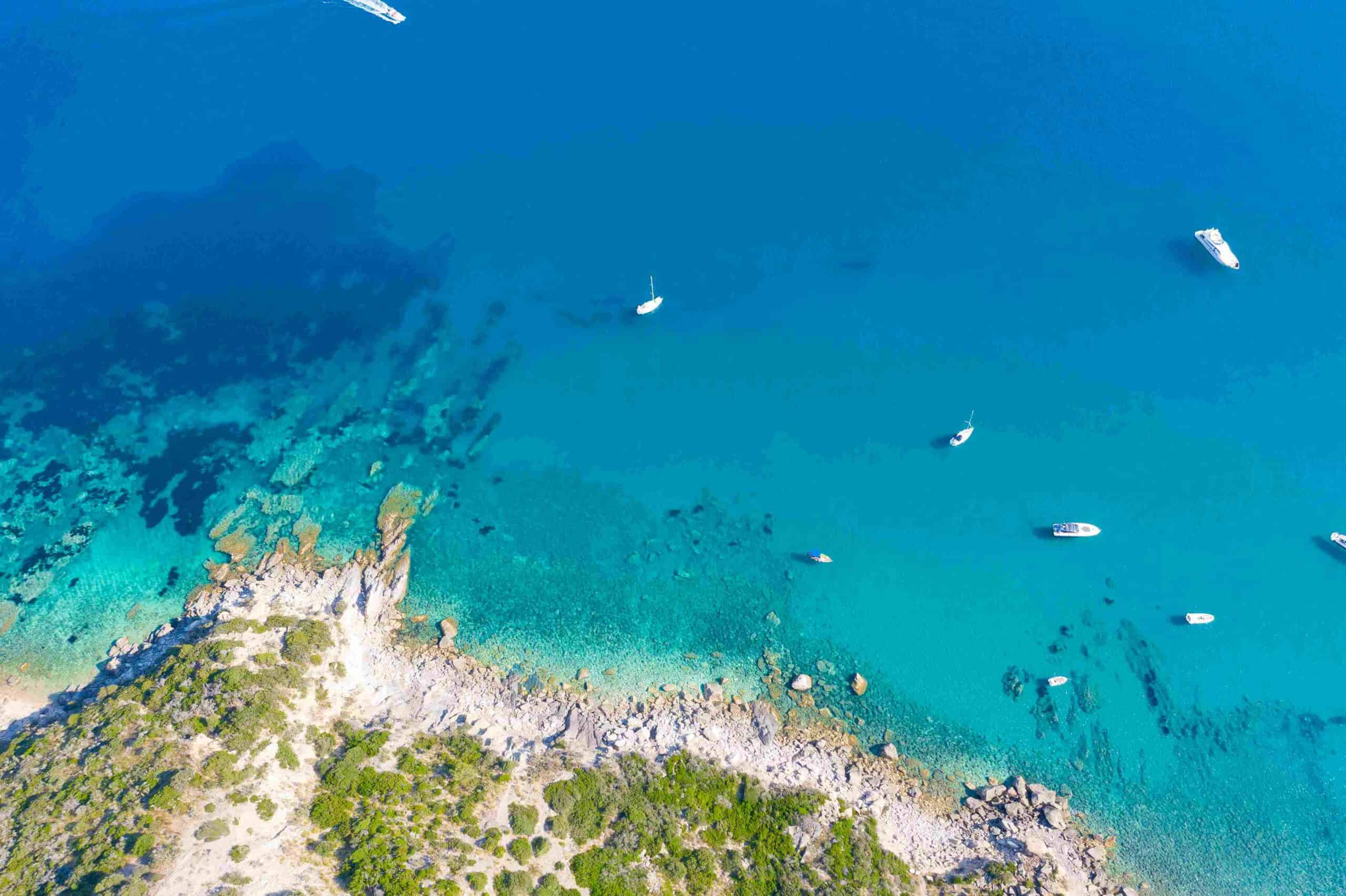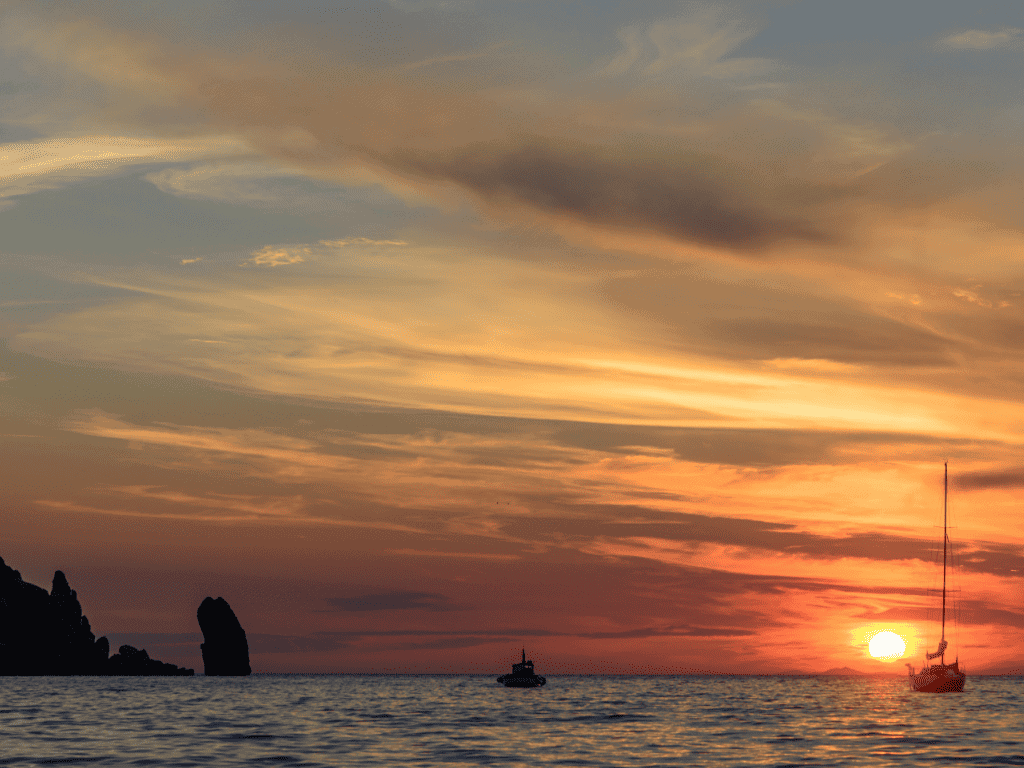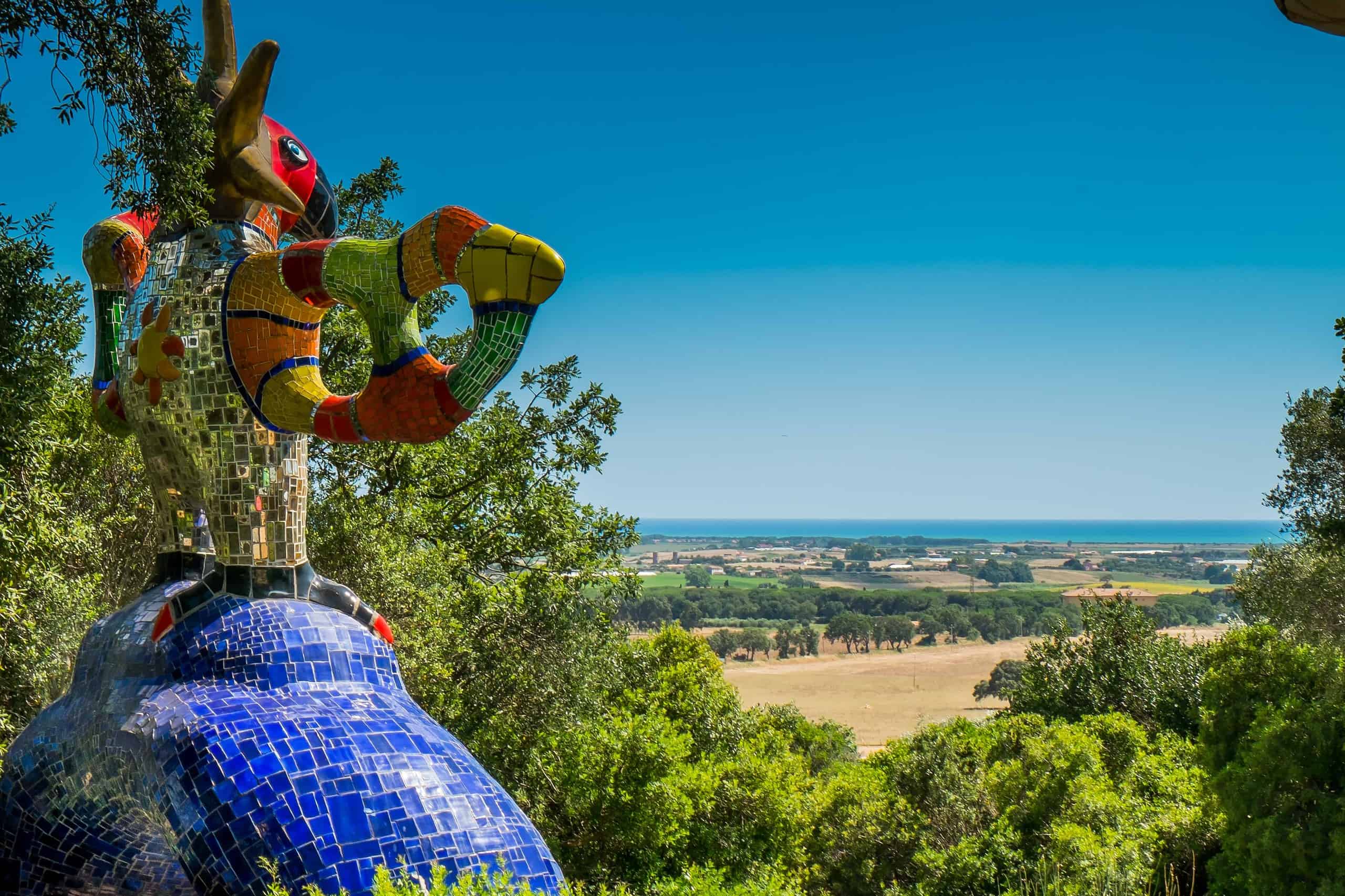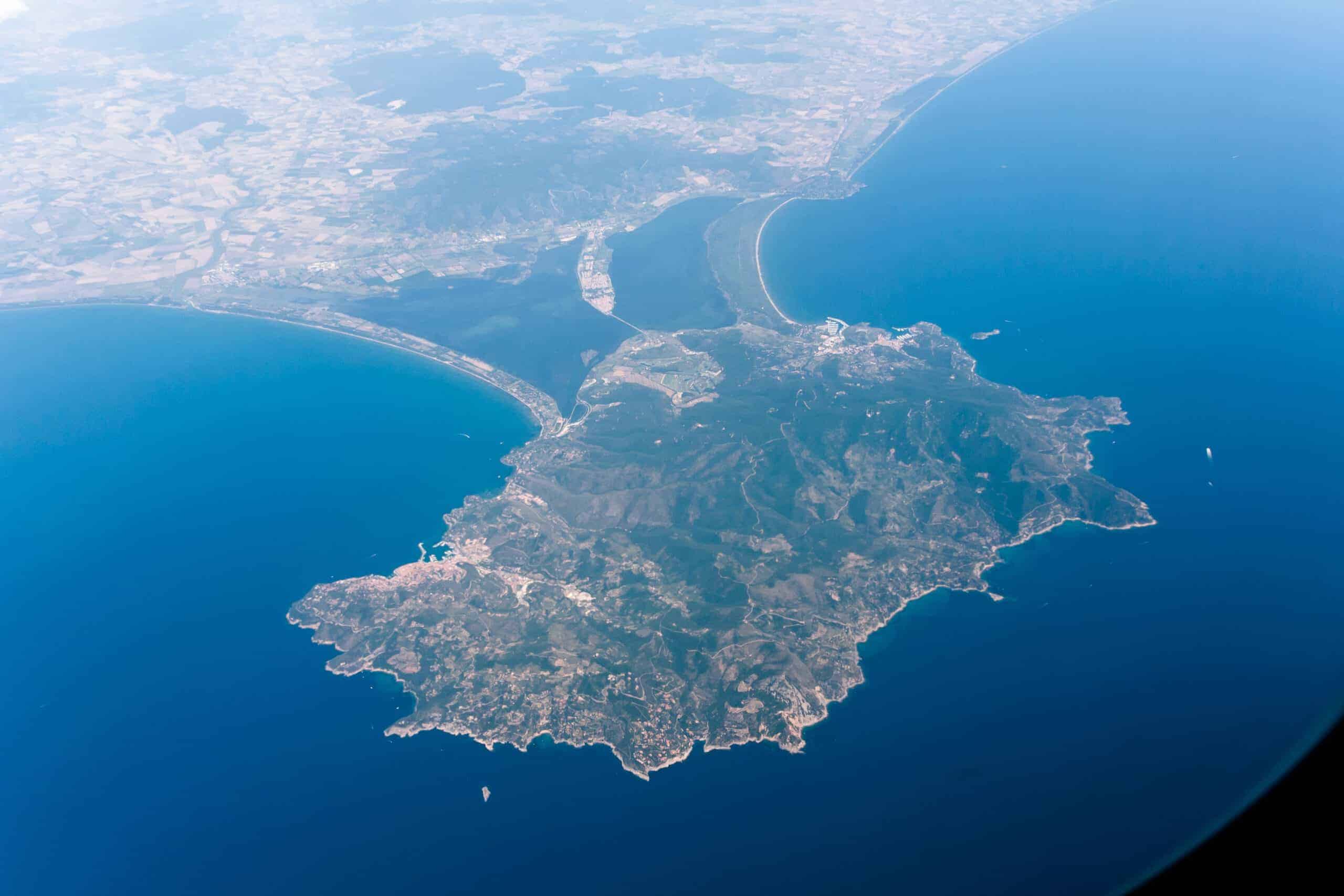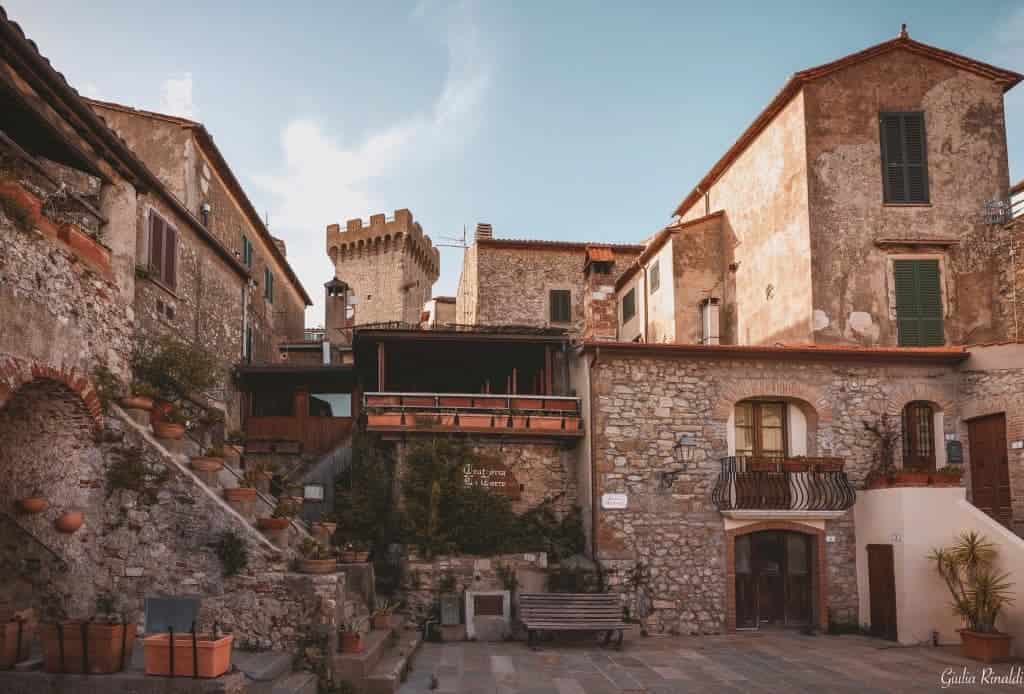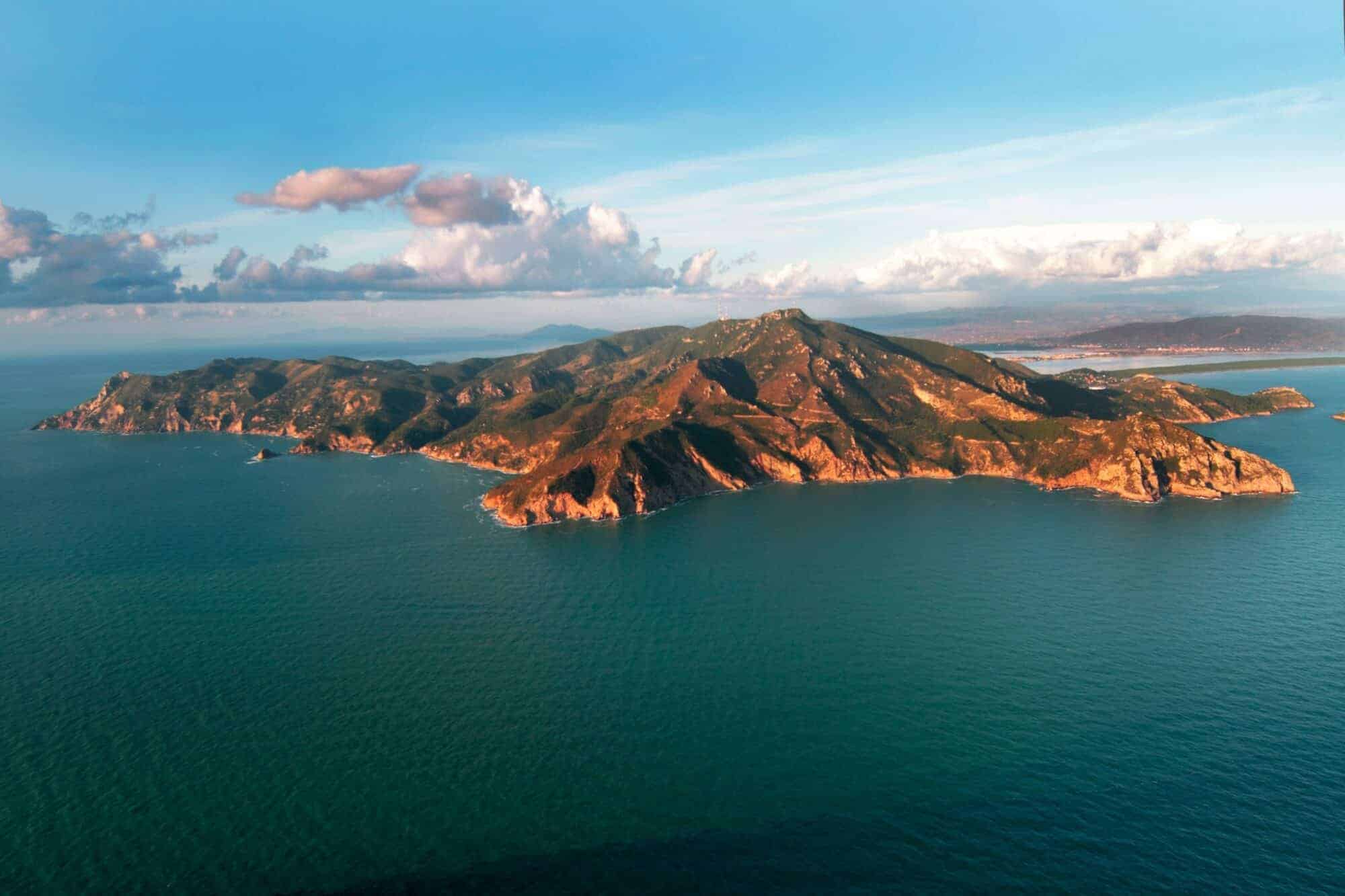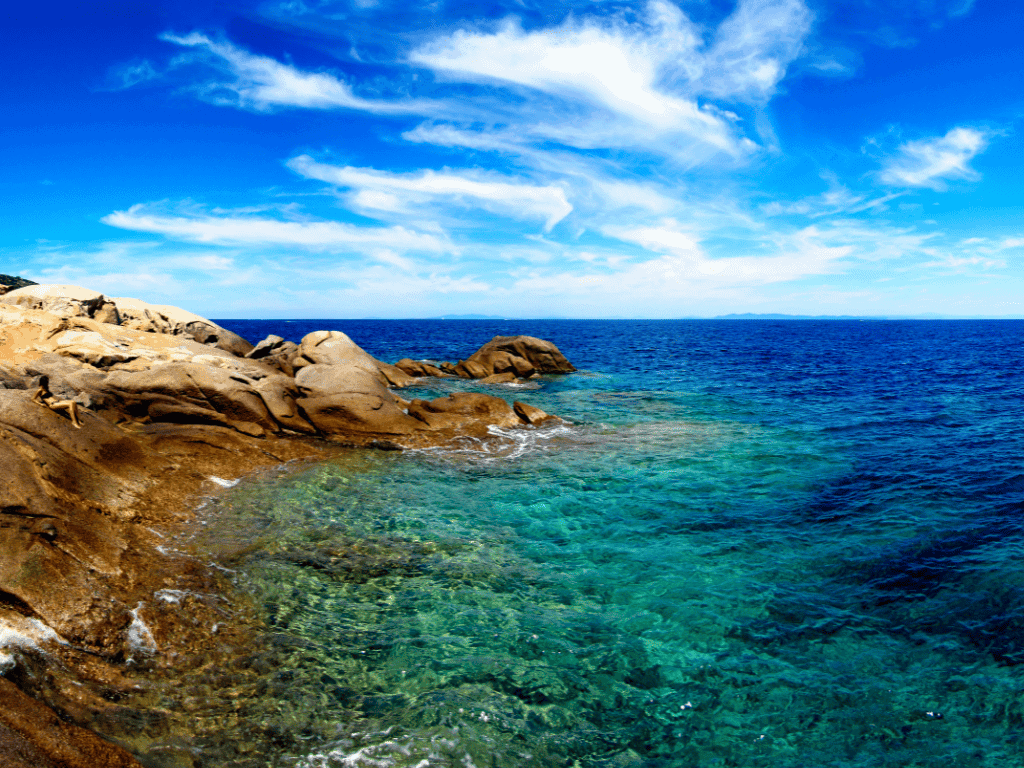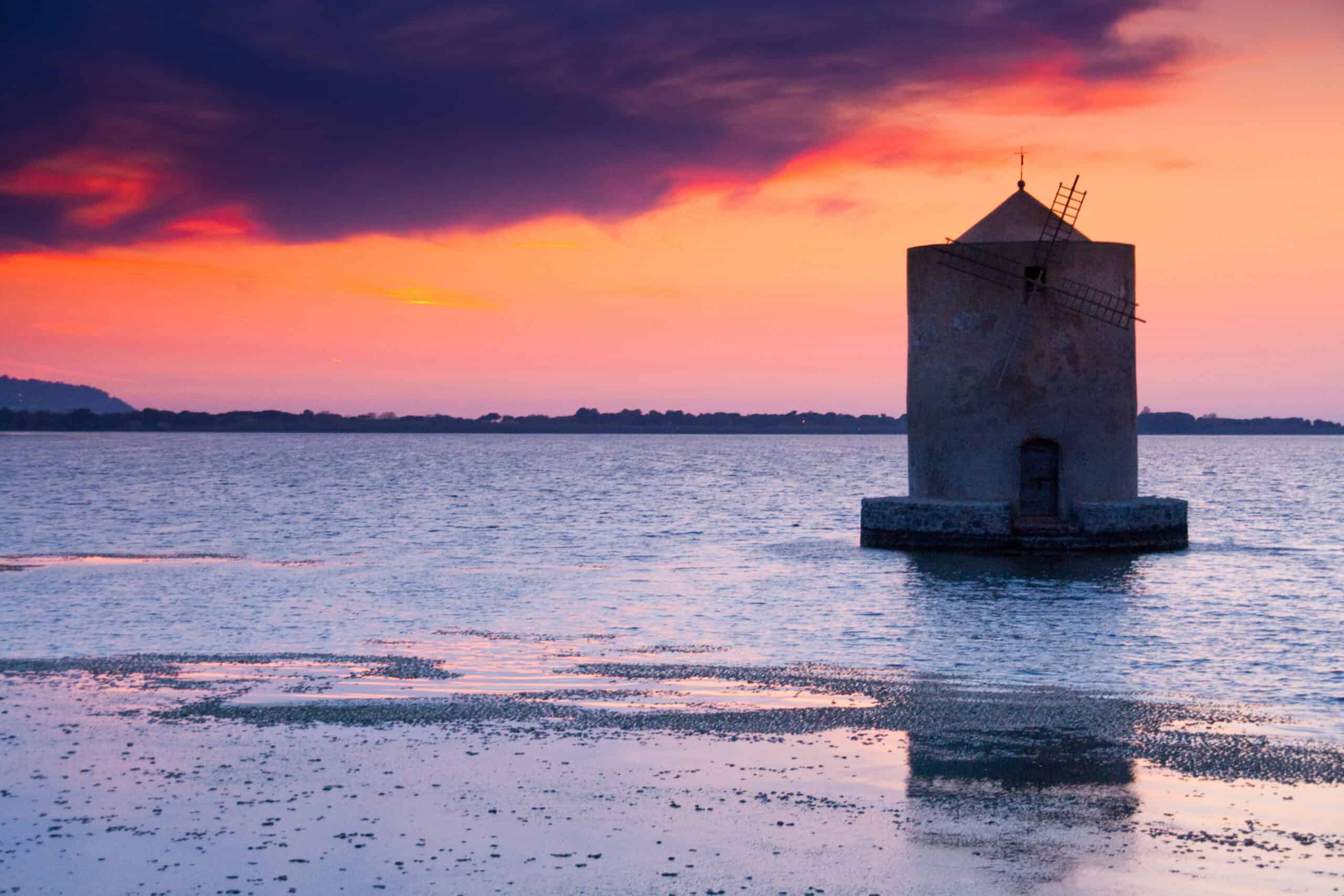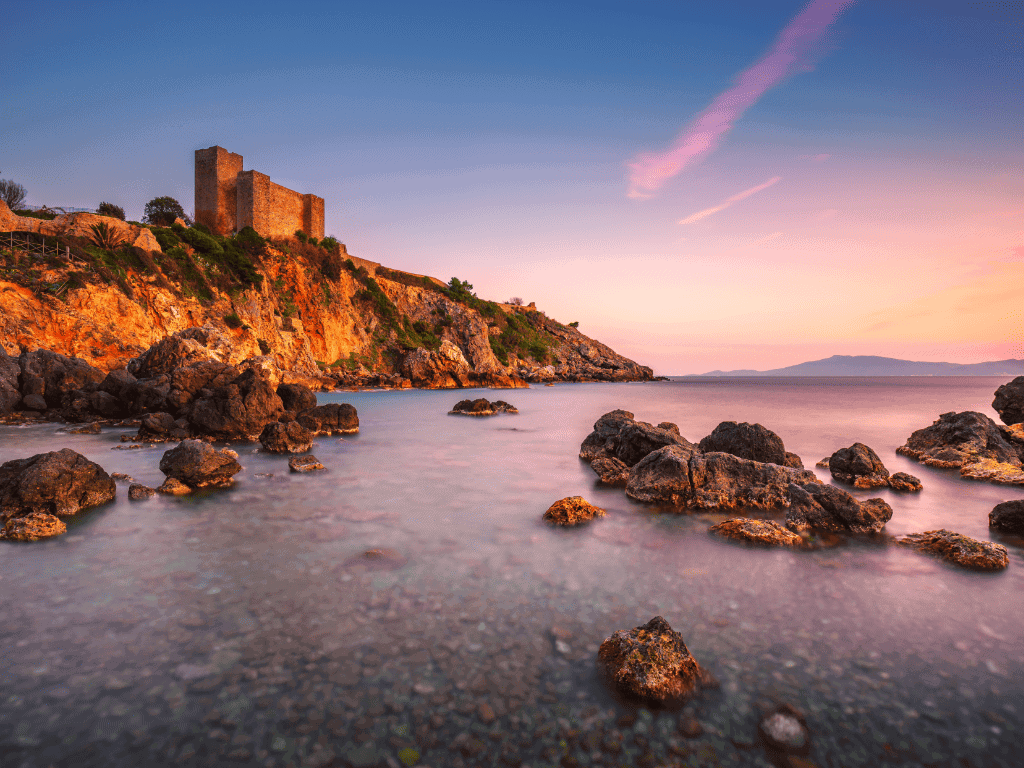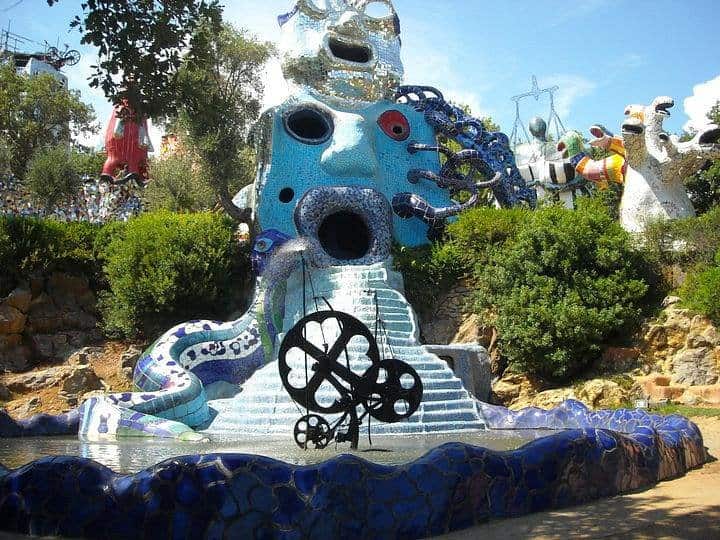The Silver Coast
The Silver Coast is located in the southern part of the Tuscany region, in one of the most beautiful coastal stretches of Italy. It is bathed by the waters of the Tyrrhenian Sea, the Orbetello Lagoon, and is characterized by the promontory of Monte Argentario.
The Silver Coast is situated in the southern Maremma Grossetana region, encompassing the municipal territories of Monte Argentario, Orbetello, and Capalbio. The area extends for about sixty kilometers along the coastline between Talamone and Capalbio (the medieval village is located inland, not on the coast). It is bounded by the southern slopes of the Monti dell’Uccellina to the north, which are entirely part of the Regional Natural Park of Maremma</strong, and the Lake of Burano to the south (bordering the Viterbo Province in Maremma Laziale). It is characterized by the promontory of Monte Argentario. An ancient Mediterranean island, Monte Argentario, connected to the mainland by two sandy strips called the Tomboli di Giannella and di Feniglia, which enclose the Orbetello Lagoon. Monte Argentario rises in front of the Isola del Giglio and the island of Giannutri, culminating with the 653 meters of Punta Telegrafo. Almost entirely hilly, the promontory has a subsoil rich in sandstone, while the surface is covered with typical Mediterranean vegetation, including chestnut trees at higher elevations. Among the dense and fragrant vegetation, a winding asphalt road connects Orbetello to the summit of Argentario, where a military installation is located. On clear days, the view extends to the marvelous Islands of the National Park of the Tuscan Archipelago, Corsica, the Tolfa Mountains, and the foothills of Mount Amiata. About halfway along the route, the gleaming Convent of the Passionist Fathers (273 meters) stands out among the woods. It was founded in 1720 by St. Paul of the Cross after the Virgin Mary appeared to him and indicated the location to build the convent.
PORTO ERCOLE AND PORTO SANTO STEFANO ARE THE FAMOUS LOCATIONS ON THE SILVER COAST, LOCATED ON THE PROMONTORY OF MONTE ARGENTARIO, A PREFERRED DESTINATION FOR NATIONAL AND INTERNATIONAL VIP TOURISM.
What to See
In Capalbio, in the Garavicchio area, the French artist Niki de Saint Phalle created the Tarot Garden, an exceptionally charming open-air museum, featuring 22 statues covered with glass and ceramics, some as tall as 15 meters. It’s one of the most important examples of environmental art in Italy.
All around Argentario, there is a succession of enchanting small beaches, cliffs, precipices, caves, ancient watchtowers, and imposing fortresses. These fortresses were built by the Spanish in the 16th century to defend the Stato dei Presidi, allowing them to control vast territories and maritime traffic due to their strategic location. Along the coastline, next to sunny stretches of fine sandy beaches, there are lush and bright pine forests, interspersed with precious wetlands. These wetlands are refuges for numerous species of migratory birds and plant associations, protected and managed by the WWF: Oasi di Protezione della Laguna di Ponente di Orbetello and Riserva Naturale del Lago di Burano. The coastal lake of Burano is still saved from silting thanks to the so-called Tagliata Etrusca, a remarkable engineering work that was meant to preserve the ancient port of the city of Cosa (a Roman colony founded in 273 B.C.), located at the base of the Ansedonia promontory, ensuring the constant ebb and flow of the waters.

